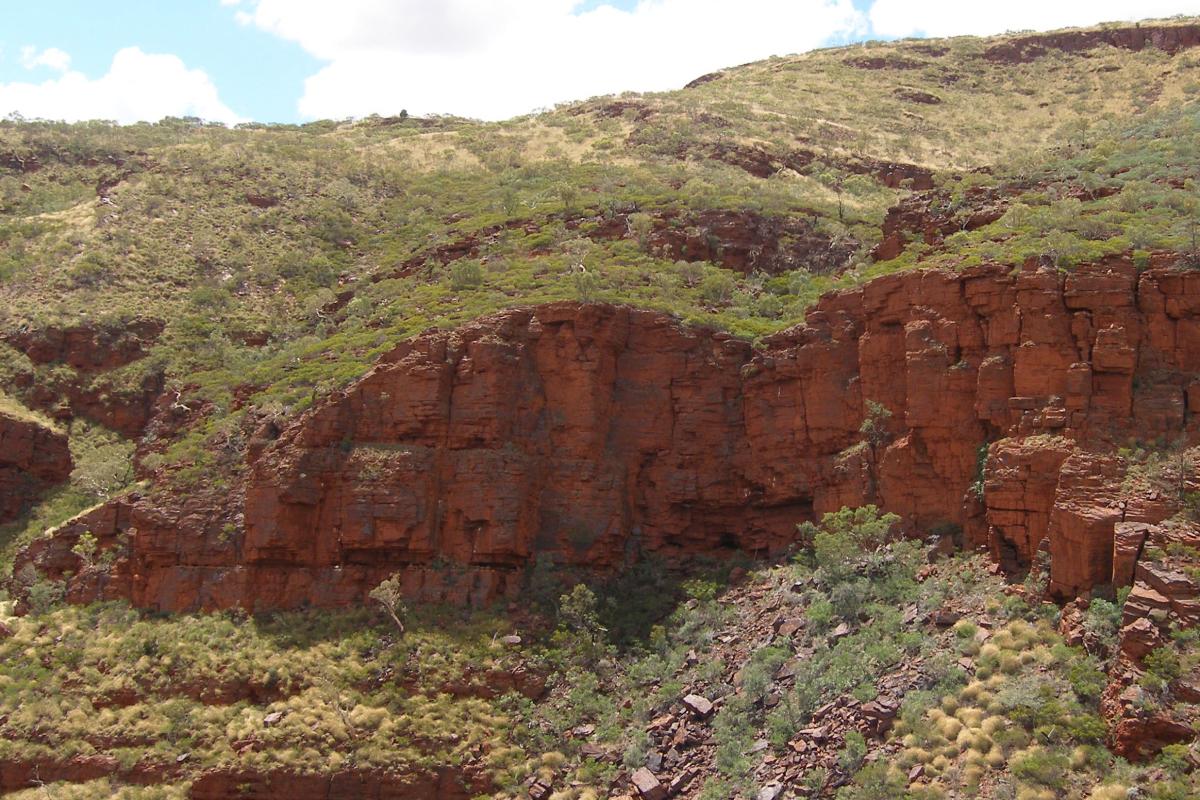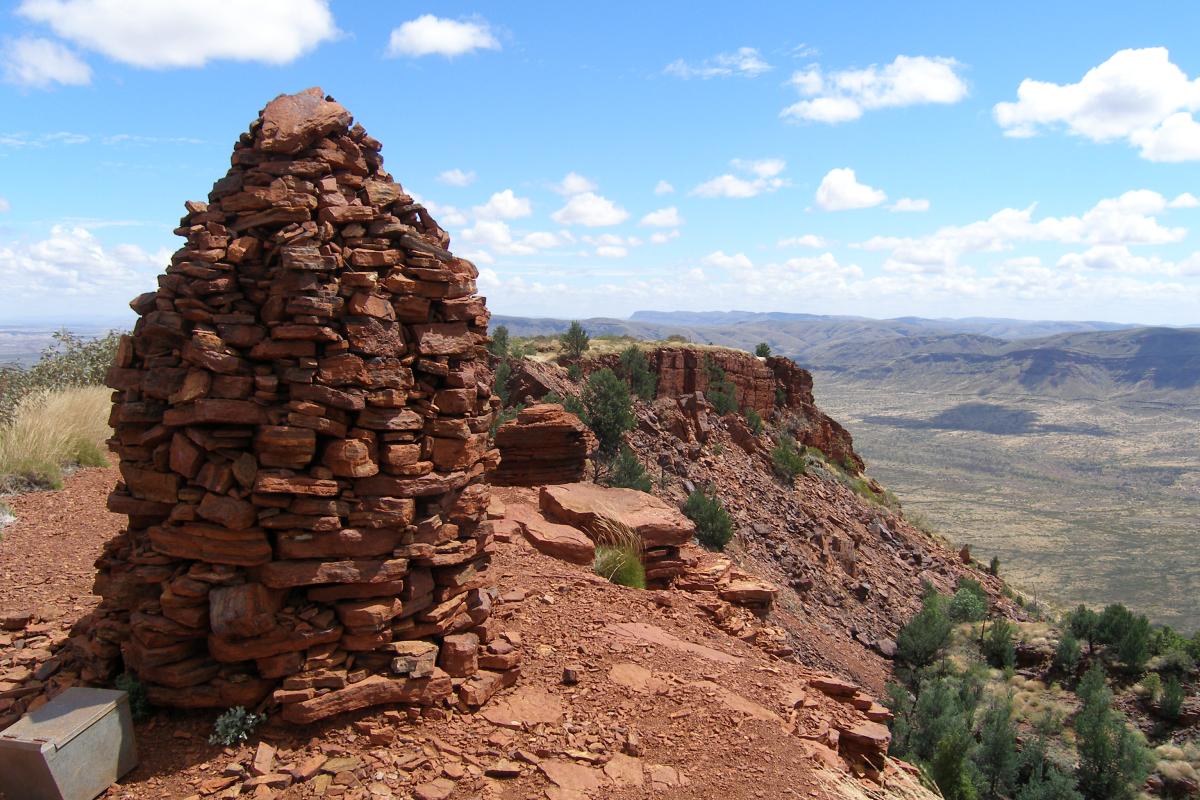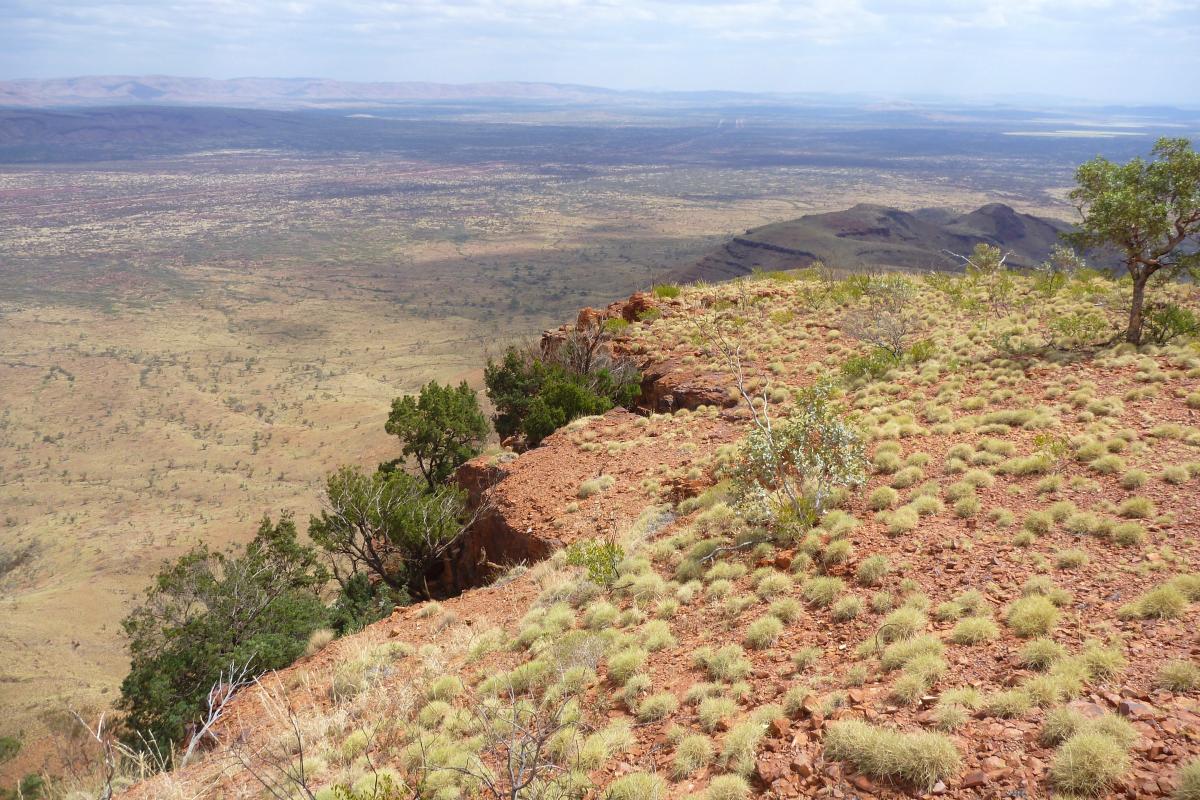About this place
The Aboriginal name for Mount Bruce is Punurrunha. At 1,234m high, it is Western Australia’s second tallest peak.
Marandoo is an iron-ore mine run by Rio Tinto. It opened in October 1994. The Hamersley Range is one of the world’s major iron ore sources and contains about 80 per cent of Australia’s identified iron ore reserves.
In hotter months, it is best to climb during the cooler parts of the day. Take plenty of drinking water and sun protection.
Marandoo View - follow the path from the Mount Bruce parking area to view the Marandoo iron ore mine site.
- Distance: 500m
- Class: 2
- Time: 30 minutes return.
Safety information
Plan when to visit. Consider travelling with a personal location beacon (PLB). In the event you need to be rescued it could save your life!
- Blue asbestos is present in Yampire and Wittenoom Gorges. Asbestos dust may cause cancer if inhaled.
- Stay back from cliff edges – they are about 100m high, often with loose rocks near the edge.
- Flash floods can occur – do not enter gorges if there is rain in the area. If it starts raining when you are in a gorge, leave immediately.
- The water in gorge pools can be extremely cold, especially between April and September; hypothermia can occur. Do not dive or jump into water.
- During summer, temperatures frequently top 40°C. Drink plenty of water at all times.
- Dingoes are common around Dales Campground. They may scavenge for food and can be aggressive. Do not feed dingoes, supervise children at all times, walk in groups and store food in your vehicle. Read more in the Be Dingo Aware fact sheet.
Gallery



Facilities
Toilet
Activities
 Bushwalking
Bushwalking
Plants, wildlife and fungi
Visit the Atlas of Living Australia for a list of species recorded within a 5km radius of Mount Bruce.
Traditional Owners
The park is the traditional home of the Banyjima, Kurrama and Innawonga Aboriginal people. The Banyjima name for the Hamersley Range is Karijini. Aboriginal land management practices, such as 'fire stick farming', resulted in a diversity of vegetation types and stages of succession that helped determine the nature of the plants and animals found in the park today.
We recognise and acknowledge Banjima, Innawongka and Eastern Guruma people as the traditional owners of Karijini National Park.